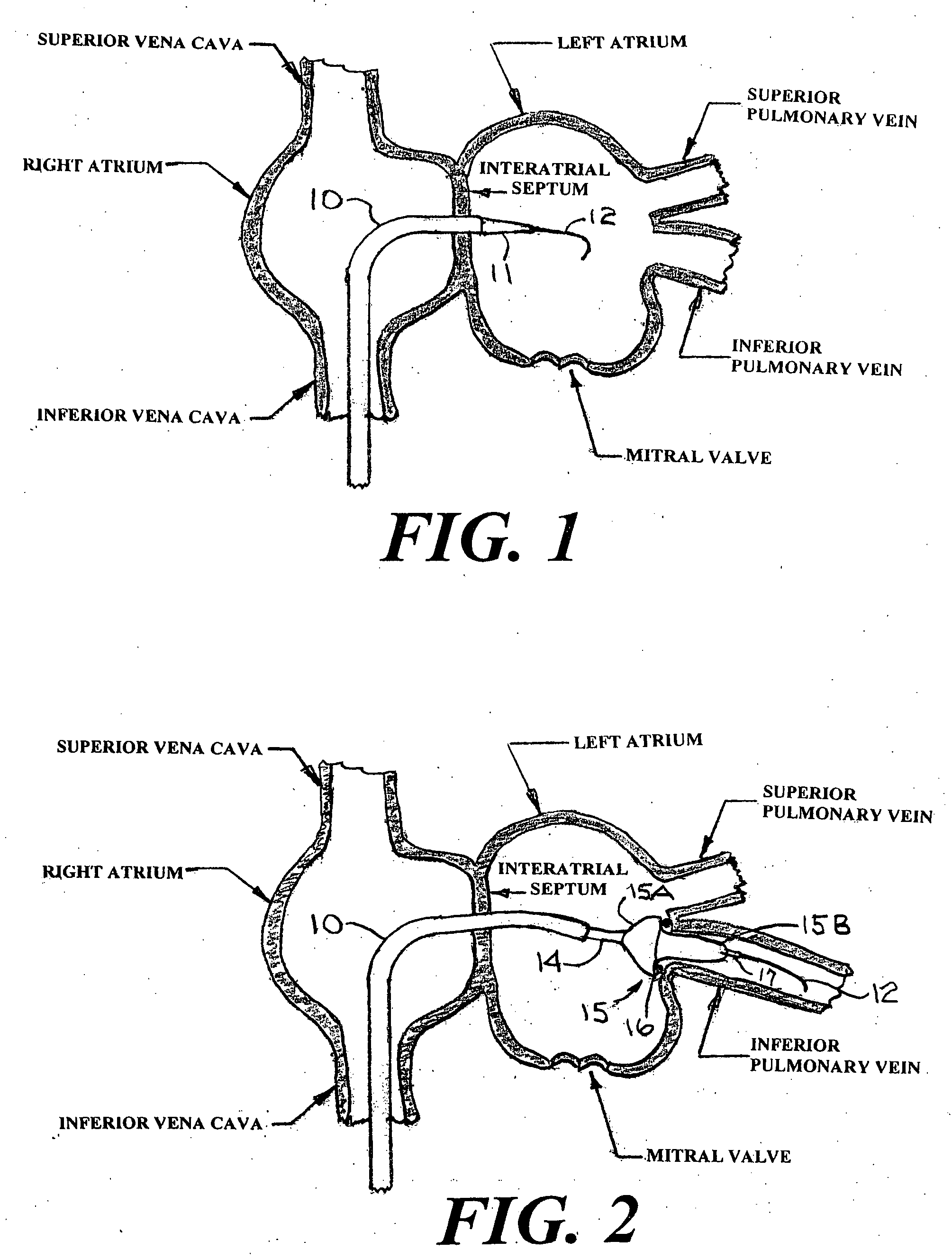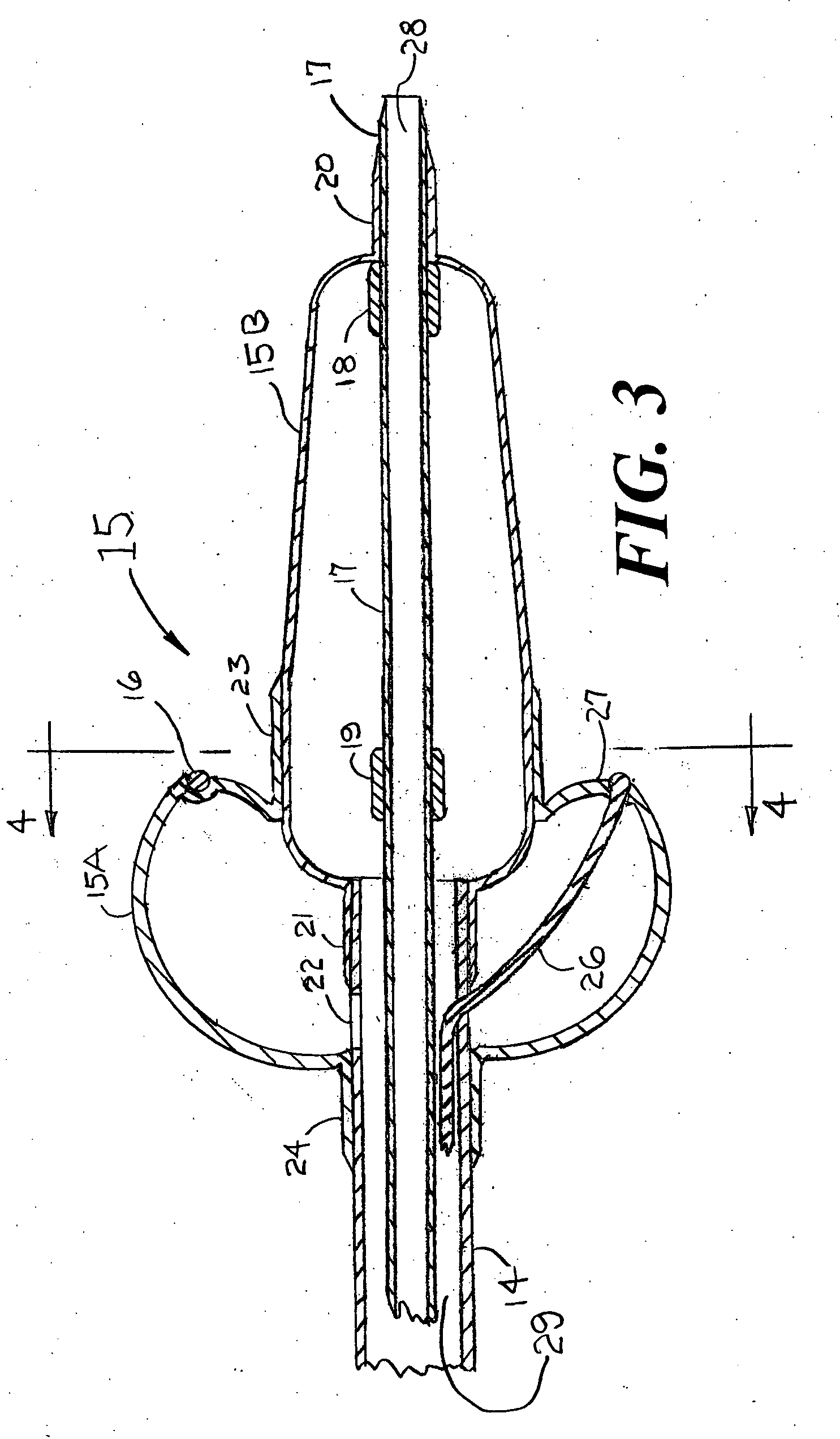Catheter system for the treatment of atrial fibrillation
a catheter system and atrial fibrillation technology, applied in medical science, surgical instruments for cooling, surgery, etc., can solve the problems of not always providing a clear answer and a large amount of procedure time, and achieve the effect of reducing the risk of iatrogenic pulmonary vein stenosis, rapid and accurate positioning of the toroidal balloon, and reducing the risk of pulmonary vein stenosis
- Summary
- Abstract
- Description
- Claims
- Application Information
AI Technical Summary
Benefits of technology
Problems solved by technology
Method used
Image
Examples
Embodiment Construction
[0036]FIG. 1 is a cross section of the right and left atria of a human heart showing two of the four pulmonary veins that enter the left atrium. FIG. 1 does not attempt to accurately display the exact location of these two pulmonary veins. It should be understood that there are actually four pulmonary veins that enter the left atrium. FIG. 1 also shows a distal portion of a guiding catheter 10 that is designed explicitly for introduction through the left or right femoral vein; from there through the inferior vena cava, and from there into the right atrium. After the trans-septal placement of a guide wire 12 into the left atrium, the dilator 11 and the distal end of the guiding catheter 10 can be advanced over the guide wire 12 and through the interatrial septum into the left atrium. The dilator 11 can include a radiopaque metal marker ring (not shown) at or near its distal end to improve the visualization of the dilator 11 by means of fluoroscopy or echocardiography. After the dista...
PUM
 Login to View More
Login to View More Abstract
Description
Claims
Application Information
 Login to View More
Login to View More - R&D
- Intellectual Property
- Life Sciences
- Materials
- Tech Scout
- Unparalleled Data Quality
- Higher Quality Content
- 60% Fewer Hallucinations
Browse by: Latest US Patents, China's latest patents, Technical Efficacy Thesaurus, Application Domain, Technology Topic, Popular Technical Reports.
© 2025 PatSnap. All rights reserved.Legal|Privacy policy|Modern Slavery Act Transparency Statement|Sitemap|About US| Contact US: help@patsnap.com



